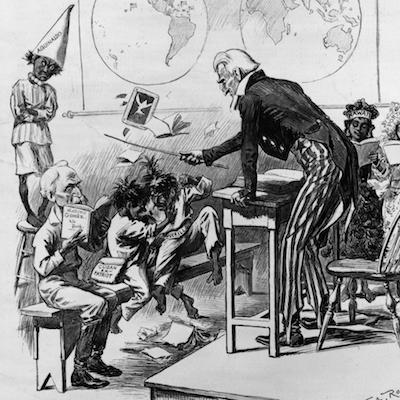 Multiple studies have shown that Black students in public schools are more harshly disciplined than White students, leading to a considerable racial gap in expulsion and suspension. (For example, see JBHE post.) Some observers say that this racial disparity is simply because Black students are more likely than White students to misbehave.
Multiple studies have shown that Black students in public schools are more harshly disciplined than White students, leading to a considerable racial gap in expulsion and suspension. (For example, see JBHE post.) Some observers say that this racial disparity is simply because Black students are more likely than White students to misbehave.
But a new study from scholars at Brown University in Providence, Rhode Island, and Princeton University in New Jersey, not only examined discipline rates but goes farther to examine the reasons for the racial disparity.
And the results showed that racial differences in behavior accounted for only a tiny fraction of the disparity in discipline. The analysis found that teachers’ different treatment of Black and White students accounted for 46 percent of the racial gap in suspensions and expulsions from school among 5- to 9-year-old children. It showed that about 21 percent of the gap could be explained by differences in the characteristics of schools that Black and White children attend predominantly, while differences in student behavior accounted for only 9 percent of the gap.
“Not only were Black children more likely to be suspended, but these racial differences were happening in the same schools,” said Jayanti Owens, an assistant professor of sociology and international and public affairs at Brown University and the lead author of the study. “It shows that the categories teachers use as reasons for punishment, like ‘defiance,’ ‘disrespect’ and ‘noncompliance,’ are ripe for racial discrimination. What does it mean to be disrespectful? It would be easy for a teacher to read the behavior of a kid as disrespectful when it may not have been intended that way.”
“The idea that you can have two kids of different races misbehaving in similar ways and receiving different forms of punishment — one gets a slap on the wrist, say, and the other gets suspended — is a really important thing to understand socially,” Dr. Owens added. “Subconsciously, we all have racial biases in different ways. This is one way in which those biases are manifesting in the classroom.”
The full study, “Unpacking the Drivers of Racial Disparities in School Suspension and Expulsion,” was published on the website of the journal Social Forces. It may be accessed here.










